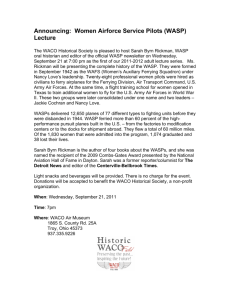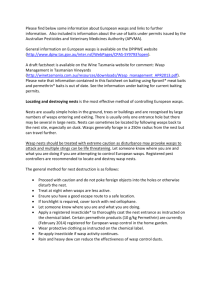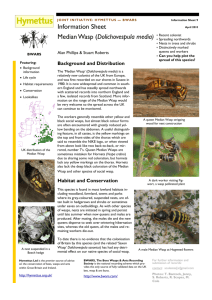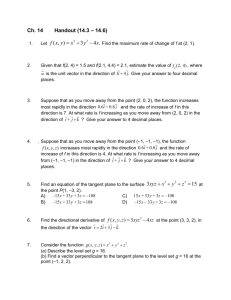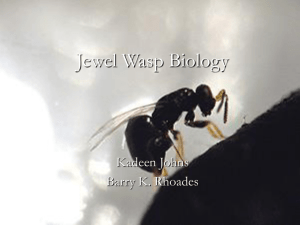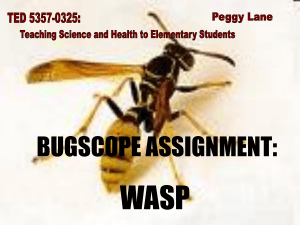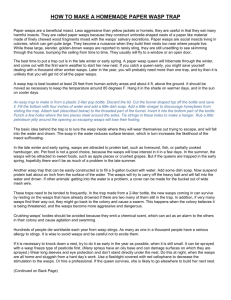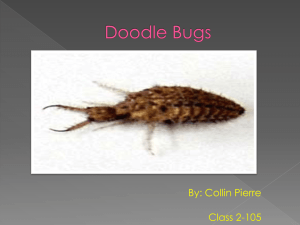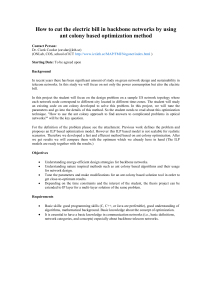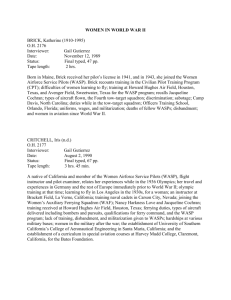Supplementary Material for: Behavioural flexibility of the chemical
advertisement
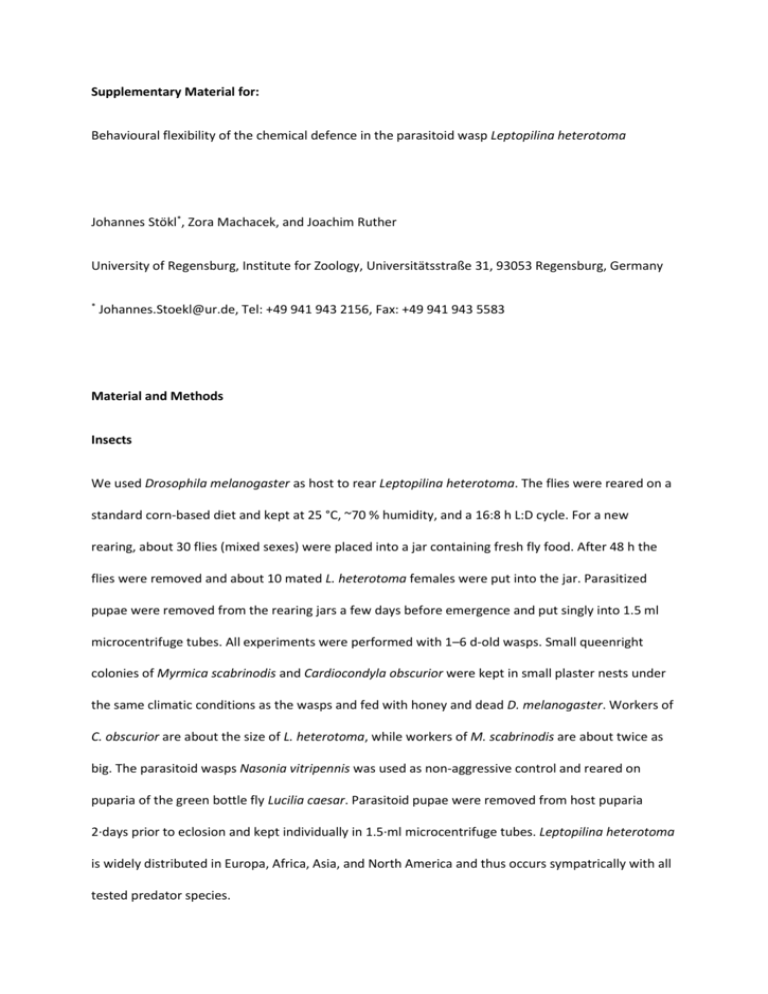
Supplementary Material for: Behavioural flexibility of the chemical defence in the parasitoid wasp Leptopilina heterotoma Johannes Stökl*, Zora Machacek, and Joachim Ruther University of Regensburg, Institute for Zoology, Universitätsstraße 31, 93053 Regensburg, Germany * Johannes.Stoekl@ur.de, Tel: +49 941 943 2156, Fax: +49 941 943 5583 Material and Methods Insects We used Drosophila melanogaster as host to rear Leptopilina heterotoma. The flies were reared on a standard corn-based diet and kept at 25 °C, ~70 % humidity, and a 16:8 h L:D cycle. For a new rearing, about 30 flies (mixed sexes) were placed into a jar containing fresh fly food. After 48 h the flies were removed and about 10 mated L. heterotoma females were put into the jar. Parasitized pupae were removed from the rearing jars a few days before emergence and put singly into 1.5 ml microcentrifuge tubes. All experiments were performed with 1–6 d-old wasps. Small queenright colonies of Myrmica scabrinodis and Cardiocondyla obscurior were kept in small plaster nests under the same climatic conditions as the wasps and fed with honey and dead D. melanogaster. Workers of C. obscurior are about the size of L. heterotoma, while workers of M. scabrinodis are about twice as big. The parasitoid wasps Nasonia vitripennis was used as non-aggressive control and reared on puparia of the green bottle fly Lucilia caesar. Parasitoid pupae were removed from host puparia 2·days prior to eclosion and kept individually in 1.5·ml microcentrifuge tubes. Leptopilina heterotoma is widely distributed in Europa, Africa, Asia, and North America and thus occurs sympatrically with all tested predator species. Behavioural assay We used dynamic headspace collection to measure the amount of (-)-iridomyrmecin (and other stereoisomers thereof) released by L. heterotoma on encounters with two differently sized ant species. For this, we put three virgin females of L. heterotoma, up to 6 days old, together with one worker of either M. scabrinodis (N=13) or C. obscurior (N=32) in a glass tube (4 mm inner diameter, 90 mm length), which was packed with 40 mg of Tenax TA® adsorbent (Sigma-Aldrich, Munich, Germany) on one side. Filtered air was pumped through the tube at 30 ml min-1 over the insects into the Tenax® filter. The behaviour of the wasps and the ant was recorded with a digital video camera (Panasonic HDC-SD20) for 10 min. The recordings were analysed using the “The Observer XT 11” software (Noldus, Wageningen, The Netherlands). We recorded the number and duration of the ant behaviours towards the wasps. All occasions in which the ant touched a wasp with its mandibles were considered as aggressive behaviours. We also recorded non-aggressive interactions, defined as all situations where the ant was within a distance of one antennal length to a wasp, but without mandible contact. Finally, we scored the grooming behaviour of the ant in reaction to the chemical defence of the wasp. As a control, we used females of the parasitoid wasp N. vitripennis, which are non-aggressive towards L. heterotoma, instead of the ant (N=10). After the observation, we removed the insects from the tube, sealed the tube with a cap at each end and stored it at -20 °C until chemical analysis. To make sure that the wasps were not depleted of iridomyrmecin, we extracted all females of L. heterotoma within 1 h after the experiment in 45 µl DCM containing 10 ng µl-1 methyl undecanoate as internal standard. We also extracted females of L. heterotoma without previous contact to a predator (N=10). Chemical analysis We applied 10 ng of methyl undecanoate (dissolved in 1 µl methanol) as internal standard to the adsorbent in the headspace tube. The headspace tubes and extracts were analysed by gaschromatography and mass spectrometry as described in Stökl et al. (2012). The iridoids produced by L. heterotoma have been identified in previous studies (Stökl et al. 2012, Weiss et al. 2013). We identified the peaks based on mass spectra and retention indices. Statistics We used the Mann-Whitney U-tests to test for differences in the duration of the aggressive behaviour of the ant and the amounts of iridomyrmecin released by the wasps between treatments. We used the Kruskal-Wallis test to test for difference in the amount extracted from the wasps after the experiments. We used linear models (LM) to test for an effect of the duration and number of the ant’s behaviour on the amount of iridomyrmecin released by the wasp. This was tested separately for the experiments with Myrmica and Cardiocondyla. All statistics were done in R Version 3.2.0. Supplementary Videos Video S1: Part of a video recording of an experiment with a worker of Myrmica scabrinodis. Video S2: Part of a video recording of an experiment with a worker of Cardiocondyla obscurior.
